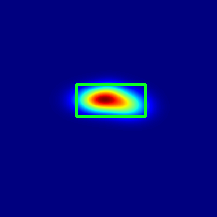Modern Redirected Walking (RDW) techniques significantly outperform classical solutions. Nevertheless, they are often limited by their heavy reliance on eye-tracking hardware embedded within the VR headset to reveal redirection opportunities. We propose a novel RDW technique that leverages the temporary blindness induced due to saccades for redirection. However, unlike the state-of-the-art, our approach does not impose additional eye-tracking hardware requirements. Instead, SaccadeNet, a deep neural network, is trained on head rotation data to predict saccades in real-time during an apparent head rotation. Rigid transformations are then applied to the virtual environment for redirection during the onset duration of these saccades. However, SaccadeNet is only effective when combined with moderate cognitive workload that elicits repeated head rotations. We present three user studies. The relationship between head and gaze directions is confirmed in the first user study, followed by the training data collection in our second user study. Then, after some fine-tuning experiments, the performance of our RDW technique is evaluated in a third user study. Finally, we present the results demonstrating the efficacy of our approach. It allowed users to walk up a straight virtual distance of at least 38 meters from within a $3.5 x 3.5m^2$ of the physical tracked space. Moreover, our system unlocks saccadic redirection on widely used consumer-grade hardware without eye-tracking.
翻译:现代再定向步行(RDW)技术大大优于经典解决方案。然而,由于严重依赖VR头盔内嵌入的眼跟踪硬件,这些技术往往有限,因为它们严重依赖在VR头盔内嵌入的眼跟踪硬件,以揭示改变方向的机会。我们建议采用新型RDW技术,利用因学士学位而导致的临时失明来调整方向。然而,与最先进的技术不同,我们的方法并没有强加更多的眼睛跟踪硬件要求。相反,深神经网络SacardeNet(一个深神经网络)接受了头轮数据培训,以便在明显的头轮期间实时预测学士学位。然后,在虚拟环境中应用了僵硬转换,以便在这些学士级学士学位的开始期间用于改变方向。然而,ScadeNet只有在与中度认知工作量相结合,从而导致反复进行头轮运行时才会有效。我们介绍了三种用户研究,头部和视向方向之间的关系在第一次用户研究中得到了确认,随后在第二次用户研究中进行了培训数据收集。随后,在进行一些微调实验后,我们的RDW技术的绩效在第三次用户级研究中进行了评估。然后,在虚拟环境上应用了38轨道上展示了我们的用户的直径定位方法的效能。最后在35方向上,我们用了。











